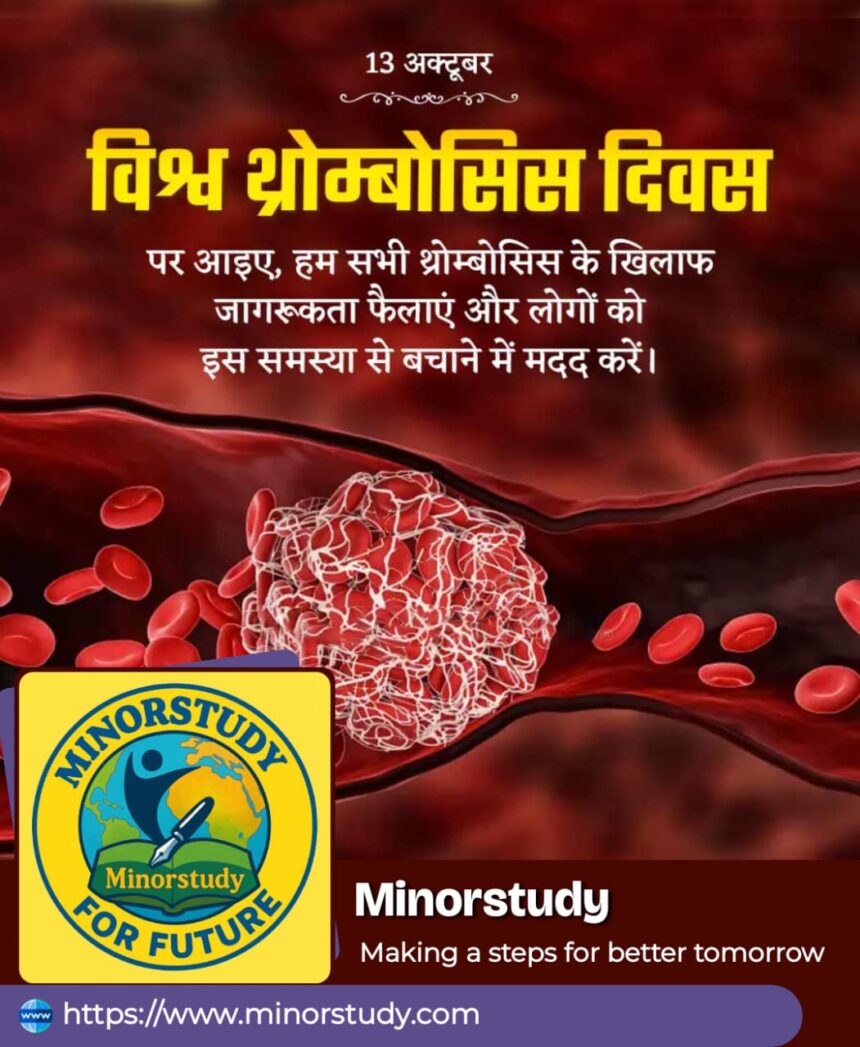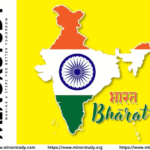World Thrombosis Day: The Powerful Mission to Save Lives
🌿 Introduction: Why World Thrombosis Day Matters More Than We Realize
Every year, on October 13, the world unites to recognize World Thrombosis Day — a day dedicated to spreading awareness about one of the most underestimated yet deadly medical conditions: thrombosis.
- 🩸 What Is Thrombosis? – A Simple Understanding
- 📜 History of World Thrombosis Day
- 🕰️ Timeline of World Thrombosis Day
- 💡 7 Eye-Opening Facts About Thrombosis
- 🌎 Global Observance: How the World Unites on This Day
- 💬 Themes of World Thrombosis Day Over the Years
- ❤️ Significance of World Thrombosis Day
- 1. Promotes Early Detection
- 2. Empowers Patients
- 3. Encourages Healthy Living
- 4. Global Solidarity
- 5. Focuses on Research and Policy
- 🙌 How to Observe World Thrombosis Day
- 🌠 Wishing Messages for World Thrombosis Day
- 🧠 Important Points to Remember
- 💬 Frequently Asked Questions (FAQs)
- 🧭 Importance of World Thrombosis Day in Our Life
- 💞 Importance to Society
- 🌈 Conclusion: A Day That Inspires Life and Movement
Thrombosis, in simple words, is the formation of a blood clot inside a blood vessel that can obstruct the flow of blood through the circulatory system. It may sound harmless, but it’s one of the leading causes of death worldwide — even more than AIDS, breast cancer, and motor accidents combined.
The tragedy lies not only in the severity of thrombosis but also in how silent and preventable it is. That’s what World Thrombosis Day aims to change — by awakening global consciousness about early detection, prevention, and the importance of a healthy lifestyle.
🩸 What Is Thrombosis? – A Simple Understanding
Thrombosis occurs when blood clots form in veins or arteries. These clots can break loose and travel to vital organs like the lungs (pulmonary embolism), heart (heart attack), or brain (stroke), causing life-threatening conditions.
There are two main types:
Venous Thrombosis: Occurs in veins (commonly deep veins of the legs).
Arterial Thrombosis: Happens in arteries and can cause strokes or heart attacks.
Understanding thrombosis is not just a medical necessity but a moral responsibility — because awareness can save lives.
📜 History of World Thrombosis Day
The World Thrombosis Day (WTD) campaign was officially launched in 2014 by the International Society on Thrombosis and Haemostasis (ISTH).
The choice of October 13 is symbolic — it marks the birthday of Rudolf Virchow (1821–1902), the renowned German physician and pathologist often called the “Father of Modern Pathology.”
Virchow’s groundbreaking research laid the foundation for understanding thrombosis and embolism, and his famous “Virchow’s Triad” (explaining how blood clots form) remains central in medicine today.
The vision behind establishing World Thrombosis Day was simple yet profound:
“To shine a global spotlight on thrombosis as an urgent and growing health problem.”
Since its inception, this campaign has become a worldwide movement, with over 3,000 partner organizations in more than 120 countries, hosting awareness drives, health talks, medical camps, and social media campaigns.
🕰️ Timeline of World Thrombosis Day
| Year | Milestone |
|---|---|
| 1821 | Birth of Rudolf Virchow — his later research becomes the foundation for thrombosis study. |
| 1856 | Virchow describes the process of blood clot formation and introduces “Virchow’s Triad.” |
| 2014 | Launch of the first World Thrombosis Day by ISTH. |
| 2016 | Over 800 organizations join the campaign across 70 countries. |
| 2019 | Social media awareness reaches millions globally. |
| 2021 | 200th Birth Anniversary of Rudolf Virchow celebrated during WTD. |
| 2024–2025 | The campaign expands with the theme “Move Against Thrombosis,” focusing on lifestyle awareness and digital health. |
💡 7 Eye-Opening Facts About Thrombosis
One in four people worldwide dies from conditions caused by thrombosis.
That’s 1 in every 4 deaths — yet it remains underdiagnosed and under-discussed.More than 10 million cases of venous thromboembolism (VTE) occur each year globally.
Prolonged sitting or immobility (such as during long flights or bed rest) significantly increases thrombosis risk.
Women are more likely to suffer thrombosis due to hormonal factors like pregnancy, birth control pills, or hormone therapy.
Hospitalization is one of the strongest risk factors — 60% of all VTE cases are linked to being in hospitals.
Thrombosis is preventable with early diagnosis, mobility, hydration, and medical awareness.
World Thrombosis Day encourages everyone to “Know Thrombosis” and act before it’s too late.
🌎 Global Observance: How the World Unites on This Day
Every October 13, thousands of organizations, health institutions, and communities come together to:
Conduct awareness walks, free screening camps, and health check-ups.
Distribute educational materials on thrombosis symptoms and prevention.
Host webinars and conferences for healthcare professionals and the public.
Light up landmarks in red, symbolizing blood flow and life.
Share personal survivor stories to inspire others to seek timely care.
The event is not limited to hospitals — schools, universities, corporates, and social platforms participate to amplify the message:
“Know Thrombosis. Save Lives.”
💬 Themes of World Thrombosis Day Over the Years
Each year, World Thrombosis Day adopts a theme emphasizing prevention, awareness, or education. Some notable themes include:
2014: “It’s Time to Talk About Thrombosis.”
2017: “Don’t Sit Too Long — Move to Prevent Thrombosis.”
2020: “Thrombosis Doesn’t Stop — Even During a Pandemic.”
2023: “Move Against Thrombosis.”
2025 Theme (expected): “Empower Awareness, Prevent Clots.”
The consistent goal remains to empower individuals through education and ensure timely diagnosis.
❤️ Significance of World Thrombosis Day
The significance of this day extends beyond medical awareness — it represents human life, prevention, and empowerment.
1. Promotes Early Detection
Awareness campaigns educate people to recognize symptoms like leg pain, swelling, shortness of breath, or chest pain — which could save lives if identified early.
2. Empowers Patients
Knowledge helps patients demand better hospital protocols and DVT prevention strategies.
3. Encourages Healthy Living
World Thrombosis Day reminds us to keep moving, stay hydrated, and maintain heart health.
4. Global Solidarity
The day unites doctors, patients, survivors, and policymakers to collectively fight thrombosis-related deaths.
5. Focuses on Research and Policy
It pushes for improved diagnosis tools, hospital screening systems, and global research funding for thrombosis management.
🙌 How to Observe World Thrombosis Day
Here are meaningful ways to observe the day:
Wear Red: Symbolizing blood and life.
Join a Health Walk: Participate in awareness rallies or online campaigns.
Educate Others: Share posts, infographics, or survivor stories on social media.
Get Screened: If you’re at risk (long travel, surgery, pregnancy, obesity), consult a doctor.
Encourage Movement: Motivate family or office colleagues to avoid prolonged sitting.
Support Research Foundations: Donate or volunteer for thrombosis research and awareness programs.
🌠 Wishing Messages for World Thrombosis Day
Spread awareness and positivity with thoughtful messages:
🌍 “This World Thrombosis Day, let’s take a step toward life — stay active, stay aware, stay alive.”
💉 “Prevent the clot, protect the heart. Awareness is the best medicine.”
❤️ “Move more, worry less. Let’s stand up against thrombosis together!”
🌟 “Today we remember: A small clot can cause big damage. Let’s act early.”
🩸 “Be aware, be informed, and be a life-saver — not just for yourself, but for your loved ones too.”
These wishes not only inspire but also help others learn the importance of awareness and prevention.
🧠 Important Points to Remember
Thrombosis is largely preventable if risk factors are identified early.
Movement and hydration are two key preventions.
Know the warning signs: leg pain, swelling, chest pain, and breathlessness.
People with obesity, smoking habits, or family history of blood clots are at higher risk.
COVID-19 increased thrombosis risks, especially in hospitalized patients.
Awareness can reduce millions of preventable deaths annually.
💬 Frequently Asked Questions (FAQs)
Q1. When is World Thrombosis Day celebrated?
A: It is celebrated every year on October 13.
Q2. Who started World Thrombosis Day?
A: It was launched in 2014 by the International Society on Thrombosis and Haemostasis (ISTH).
Q3. Why is October 13 chosen for this observance?
A: It is the birthday of Rudolf Virchow, the scientist who first studied thrombosis in depth.
Q4. What are the main symptoms of thrombosis?
A: Pain, swelling, warmth, and redness in the leg (for DVT); sudden chest pain or shortness of breath (for pulmonary embolism).
Q5. Is thrombosis preventable?
A: Yes, with early diagnosis, physical movement, hydration, and awareness, thrombosis can often be prevented.
Q6. How can I contribute to World Thrombosis Day?
A: By spreading awareness, organizing events, getting health check-ups, and educating others.
🧭 Importance of World Thrombosis Day in Our Life
In today’s sedentary lifestyle, where hours are spent sitting at desks or in vehicles, World Thrombosis Day serves as a wake-up call.
It teaches us that health is not just about diet or exercise but also about understanding silent threats.
This day reminds us:
To stand up every hour, stretch, and keep blood flowing.
To care for elderly family members at risk of immobility.
To ask doctors about clot prevention during hospitalization or surgery.
By taking these small yet consistent steps, we not only protect our own lives but also contribute to a healthier, aware society.
💞 Importance to Society
The societal importance of World Thrombosis Day lies in its ability to save lives through awareness.
Every individual educated today could be a life-saver tomorrow.
It promotes:
Preventive healthcare culture instead of reactive treatment.
Collaboration between governments, hospitals, and communities.
Mental and physical empowerment through education.
A global mindset that values life over neglect.
World Thrombosis Day is not just a date — it’s a movement of compassion, science, and awareness that binds humanity together.
🌈 Conclusion: A Day That Inspires Life and Movement
World Thrombosis Day is a reminder that the power to prevent is in our hands.
A simple action — standing up, walking, drinking water, or spreading awareness — could save someone’s life.
It teaches us the most profound truth:
“Prevention is not just better than cure — it is an act of love toward yourself and humanity.”
So this October 13, take a stand (literally and figuratively).
Move your body, move your heart, and move the world toward a clot-free, healthier tomorrow.









**mind vault**
mind vault is a premium cognitive support formula created for adults 45+. It’s thoughtfully designed to help maintain clear thinking
My developer is trying to convince me to move to .net from PHP. I have always disliked the idea because of the costs. But he’s tryiong none the less. I’ve been using Movable-type on numerous websites for about a year and am nervous about switching to another platform. I have heard very good things about blogengine.net. Is there a way I can import all my wordpress content into it? Any kind of help would be greatly appreciated!
Hello, you used to write magnificent, but the last several posts have been kinda boring?K I miss your tremendous writings. Past several posts are just a bit out of track! come on!
It¦s really a cool and helpful piece of information. I am satisfied that you just shared this useful info with us. Please keep us up to date like this. Thanks for sharing.